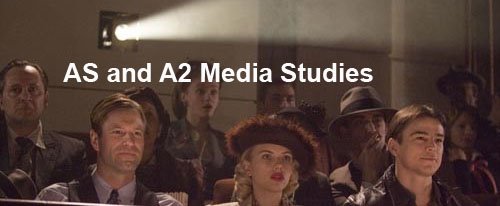Beware, the willingness to make distinctions between characteristics like this is a modernist trait. Postmoderns tend to blur distinctions.
For our case studies to date: Mad Men and GTA IV, I've coloured the most important comparisons in blue.
What is most important here is how modernism and postmodernism perceives reality.
Modernism/Modernity | Postmodern/Postmodernity |
Master Narratives and meta narratives of history, culture and national identity as accepted before WWII (American-European myths of progress). Myths of cultural and ethnic origin accepted as received. | Suspicion and rejection of Master Narratives for history and culture; local narratives, ironic deconstruction of master narratives: counter-myths of origin. |
Faith in "Grand Theory" (for explanations in history, science and culture) to represent all knowledge and explain everything. | Rejection of grand theories but is prepared to give credit to local theories |
Faith in, and myths of, social and cultural unity, hierarchies of social-class and ethnic/national values, seemingly clear bases for unity. | Social and cultural pluralism, disunity, unclear bases for social/national/ ethnic unity. |
Master narrative of progress through science and technology. | Skepticism of idea of progress, anti-technology reactions, neo-Luddism; new age religions. |
Sense of unified, centered self; "individualism," unified identity. | Sense of fragmentation and de-centered self; multiple, conflicting identities. |
Idea of "the family" as central unit of social order: model of the middle-class, nuclear family. Heterosexual norms. | Alternative family units, alternatives to middle-class marriage model, multiple identities for couplings and childraising. Polysexuality, exposure of repressed homosexual and homosocial realities in cultures. |
Hierarchy, order, centralized control. | Subverted order, loss of centralized control, fragmentation. |
Faith and personal investment in big politics (Nation-State, party). | Trust and investment in micropolitics, identity politics, local politics, institutional power struggles. |
Root/Depth tropes. Faith in "Depth" (meaning, value, content, the signified) over "Surface" (appearances, the superficial, the signifier). | Rhizome/surface tropes. Attention to play of surfaces, images, signifiers without concern for "Depth". Relational and horizontal differences, differentiations. |
Crisis in representation and status of the image after photography and mass media. | Culture adapting to simulation, visual media becoming undifferentiated equivalent forms, simulation and real-time media substituting for the real. |
Faith in the "real" beyond media, language, symbols, and representations; authenticity of "originals." | Hyper-reality, image saturation, simulacra seem more powerful than the "real"; images and texts with no prior "original". "As seen on TV" and "as seen on MTV" are more powerful than unmediated experience. |
Dichotomy of high and low culture (official vs. popular culture). Imposed consensus that high or official culture is normative and authoritative, the ground of value and discrimination. | Disruption of the dominance of high culture by popular culture. Mixing of popular and high cultures, new valuation of pop culture, hybrid cultural forms cancel "high"/"low" categories. |
Mass culture, mass consumption, mass marketing. | Demassified culture; niche products and marketing, smaller group identities. |
Art as unique object and finished work authenticated by artist and validated by agreed upon standards. | Art as process, performance, production, intertextuality. Art as recycling of culture authenticated by audience and validated in subcultures sharing identity with the artist. |
Knowledge mastery, attempts to embrace a totality. Quest for interdisciplinary harmony. The encyclopedia. | Navigation through information overload, information management; fragmented, partial knowledge; just-in-time knowledge. The Web. |
Broadcast media, centralized one-to-many communications. Paradigms: broadcast networks and TV. | Digital, interactive, client-server, distributed, user-motivated, individualised, many-to-many media. Paradigms: Napster and the Web. |
Centering/centeredness, centralized knowledge. | Dispersal, dissemination, networked, distributed knowledge |
Determinacy, dependence, hierarchy. | Indeterminacy, contingency, polycentric power sources. |
Seriousness of intention and purpose, middle-class earnestness. | Play, irony, challenge to official seriousness, subversion of earnestness. |
Sense of clear generic boundaries and wholeness (art, music, and literature). | Hybridity, promiscuous genres, recombinant culture, intertextuality, pastiche. |
Design and architecture of New York. | Design and architecture of LA and Las Vegas |
Clear dichotomy between organic and inorganic, human and machine. | Cyborgian mixing of organic and inorganic, human and machine and electronic. |
Phallic ordering of sexual difference, unified sexualities, exclusion/bracketing of pornography. | Androgyny, queer sexual identities, polymorphous sexuality, mass marketing of pornography, porn style mixing with mainstream images. |
The book as sufficient bearer of the word. The library as complete and total system for printed knowledge. | Hypermedia as transcendence of the physical limits of print media. The Web as infinitely expandable, centerless, inter-connected information system. |
http://www9.georgetown.edu/faculty/irvinem/theory/pomo.html
Martin Irvine
irvinem@georgetown.edu
© 2004-2009
All educational uses permitted with attribution and link to this page.
irvinem@georgetown.edu
© 2004-2009
All educational uses permitted with attribution and link to this page.

No comments:
Post a Comment